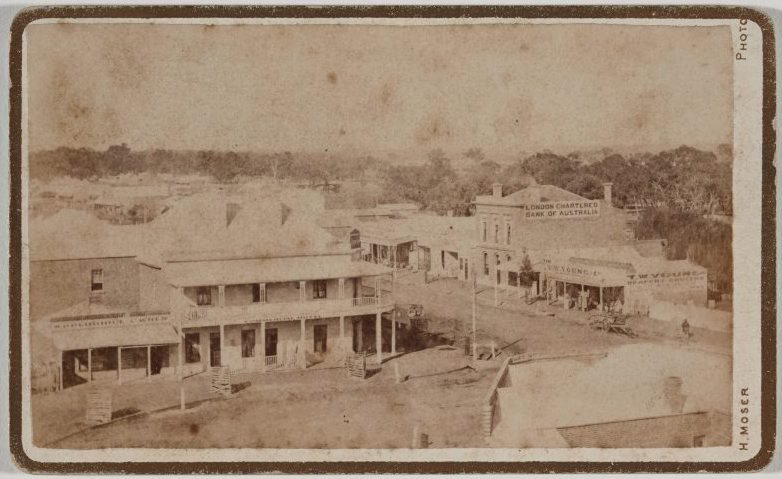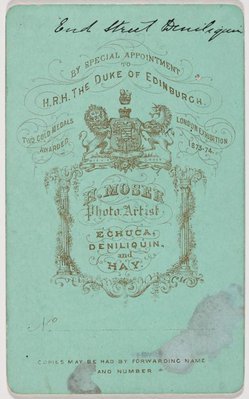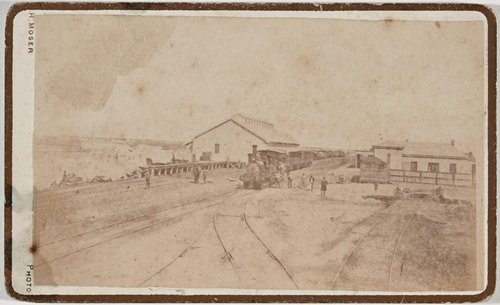-
Details
- Date
- 1877-1887
- Media category
- Photograph
- Materials used
- carte de visite
- Dimensions
- 5.9 x 9.4 cm image; 6.3 x 10.2 cm mount card
- Signature & date
Not signed. Not dated.
- Credit
- Purchased 2014
- Location
- Not on display
- Accession number
- 417.2014
- Copyright
- Artist information
-
Herman Moser
Works in the collection
- Share
-
-
About
Herman Moser was a professional photographer and jeweller. Born in Germany, he immigrated to Australia with his family in 1848 and settled in South Australia. In the late 1850s he established himself as a jeweller in the gold-mining town of Ballarat and by 1866 was running a photographic studio. Moser was commissioned to take views of Ballarat for exhibition at the Melbourne Intercolonial Exhibition. He showed photographs at the Vienna and London exhibitions of 1873, which were awarded a gold medal at the latter. In 1876 Moser gave up his photographic business for farming.
A carte de visite is a stiff card of about 10 x 6.4 cm, with an attached paper photograph, invented in 1854 by André-Adolphe-Eugène Disderi. They were introduced into Australia in 1859 by William Blackwood with albums arriving in 1860, aiding the collection and distribution of multiple cartes. Cartes were usually portraits and were made by the millions worldwide. Multi-lens, or ‘multiplying’ cameras were introduced in the 1860s, which were capable of producing from 2 to 32 images in quick succession, dramatically increasing the number of cartes de visite that could be made from a single photographic plate. They were easily reproduced by making paper contact prints from the glass plates, which were then cut and pasted to card.
-
Exhibition history
Shown in 1 exhibition
The photograph and Australia, Art Gallery of New South Wales, Sydney, 21 Mar 2015–08 Jun 2015
The photograph and Australia, Queensland Art Gallery, South Brisbane, 04 Jul 2015–11 Oct 2015



